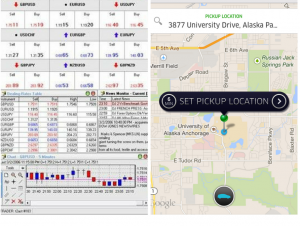[spb_text_block animation=”none” animation_delay=”0″ simplified_controls=”yes” custom_css_percentage=”no” padding_vertical=”0″ padding_horizontal=”0″ margin_vertical=”0″ custom_css=”margin-top: 0px;margin-bottom: 0px;” border_size=”0″ border_styling_global=”default” width=”1/1″ el_position=”first last”]
Even the most elaborately planned or fully ready-made apps are not without their own challenges when it comes to implementation. Your clients will be grateful for your realistic but helpful approach in accompanying them on this journey.
[/spb_text_block] [spb_image image=”17728″ image_size=”full” frame=”noframe” caption_pos=”hover” remove_rounded=”yes” fullwidth=”no” overflow_mode=”none” link_target=”_self” lightbox=”no” intro_animation=”none” animation_delay=”200″ width=”1/1″ el_position=”first last”] [spb_text_block animation=”none” animation_delay=”0″ simplified_controls=”yes” custom_css_percentage=”no” padding_vertical=”0″ padding_horizontal=”0″ margin_vertical=”0″ custom_css=”margin-top: 0px;margin-bottom: 0px;” border_size=”0″ border_styling_global=”default” width=”1/1″ el_position=”first last”]
Your ideal approach is to help them face their challenges and find ways to overcome them during the implementation of an enterprise mobile application. Make sure they know how the implementation goes and what to do when challenges emerge.
Step 1: Negotiating a contract
During the planning phase of a mobility project, a business must decide for a development method for its mobile application: whether it will be coming from a software vendor as an off-the-shelf, solution, from a platform provider, or from individual development. Or, it decides for a new way of implementation that involves a ready-to-use, customizable solution.
Whichever the provider, it needs to have a detailed requirements lists from the client, in order to deliver exactly what’s needed. And here, let’s refer to the importance of planning again. Negotiating a good contract with a vendor or developer is 90% planning and 10% flexibility.
The series of decisions your client needs to make about a mobile application is partly technical, partly organizational. You can help most in the first one but can also stress the importance of the second: a mobile application fundamentally changes the workflows in an organization.
Step 2: Define a measurable outcome
A mobile app is useful for the business if it can contribute to its success. But how do you measure usefulness? A good mobile app improves productivity – that’s one thing that can be translated to numbers in the book. It can also be engaging, which has a positive impact on employee turnover rates and branding.
The number of active users, the hours saved, the number of new contracts or positive feedback from the users can all be measurable outcomes supporting the mobilization project. The rightly set measures, then, help to avoid the pitfalls of either getting enthusiastic about the new technology for its own sake or avoiding it altogether for its believed to deliver no returns.
Analyzing the client’s requirements will allow opting for the right solution in the right timeframe.
Step 3: Set the timeline: develop, install, configure, customize
Speaking of a timeframe: how long do you think an implementation can last? Anyone who has ever done it would say: it depends, but even forever. The most intensive phase, the development, requires a lot of resources, although the exact amount will depend on the type of chosen developer method and the type of app (web, native, or hybrid).
Decision-making, as seen above, is again a huge part of the time requirements of the development and implementation process. The more time it takes to launch the app the likeliness of delays increases and it makes harder and harder to keep stakeholders motivated. No wonder one of the most common requirements to an implementation is to make it faster.
A configurable, ready-to-use enterprise mobility product saves tons of time on the most resource-intensive phase, development, while it also makes it easier to install, configure, and customize the application. By selecting an industry-specific version, the app will come with the right features, and the minor modifications necessary to tailor it to the business take only a few hours.
Step 4: Test, test, test
Testing is a necessary step in the implementation process to review what is working and what is not, and decide if a change is needed. The first stage of testing is the job of the specialist developers who can find the bugs and also give feedback about them.
The functionality, usability, and consistency of the tool are then tested by the users themselves. Here is the first chance to close the communication gap between them and the developers who will be tasked to make improvements in line with the user expectations and experiences.
If it is clear that what they got is not yet the final product, users can give invaluable information on all aspects of the product, but, most importantly, on user experience. Employees used to tolerate the less-attractive apps but this has changed. The overflow of beautiful consumer apps calls for a worthy complement on the business side.
With a Scolvo product, though, the developer testing is already taking care of, and users will surely not have a hard time using the app that is so simple and comprehensible – it can be used from day one without any training.
Step 5: Launch
When all the tests have been completed and all necessary adjustments are made, the application is ready to launch. Unlike with consumer apps, the marketing element is not so significant: if the client has done a good job making the employees test the new tool, it won’t be coming out of the blue. If they have done an even better job listening to their feedback and applying the requested changes in functionality or user experience, then the app is really doomed to succeed.
But even with the most successful engagement or productivity metrics, the first few weeks or month of live usage is crucial. Checking the performance reports and fixing any failing functions is a smart way to extinguish the fires of rebellion and disengagement – and a good follow-up support program can be a strong argument for a vendor choice!
Help your clients overcome the typical challenges of mobile implementations – Join the SCOLVO partner community today!
[/spb_text_block]




